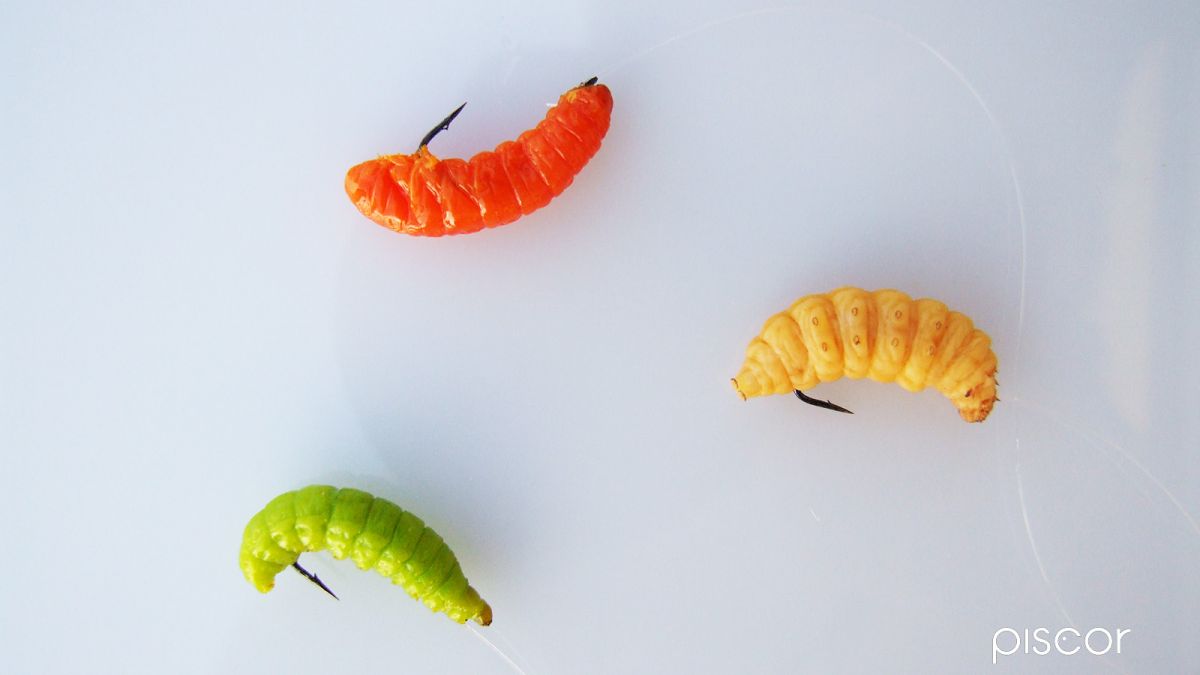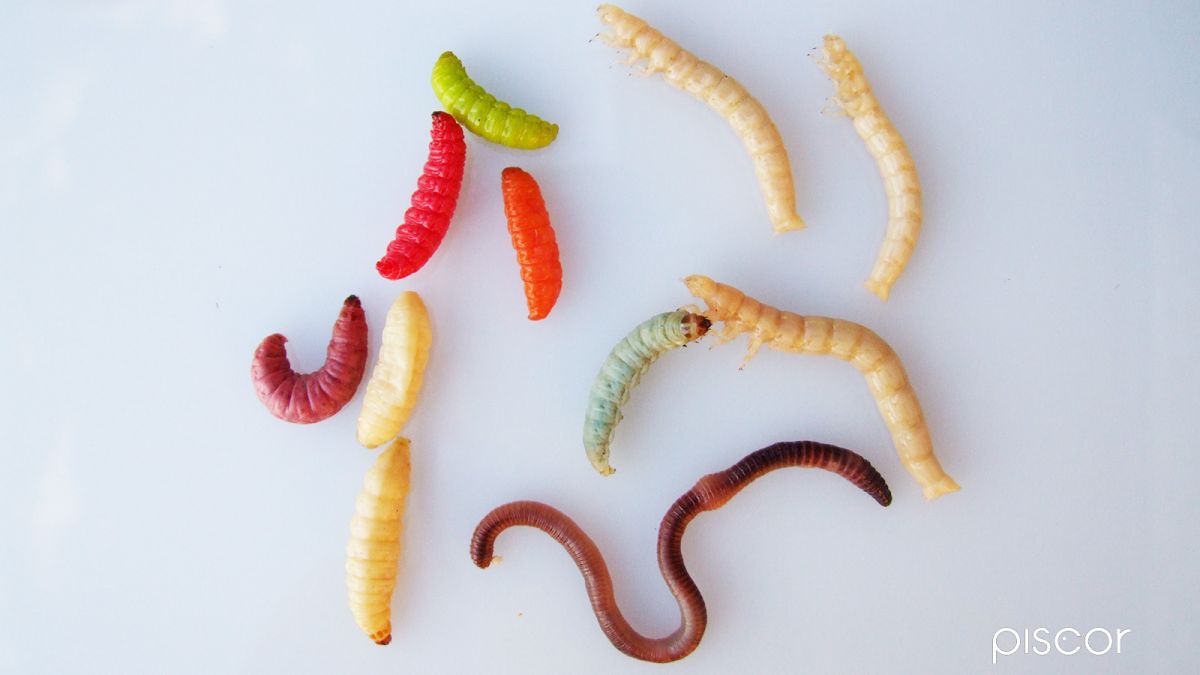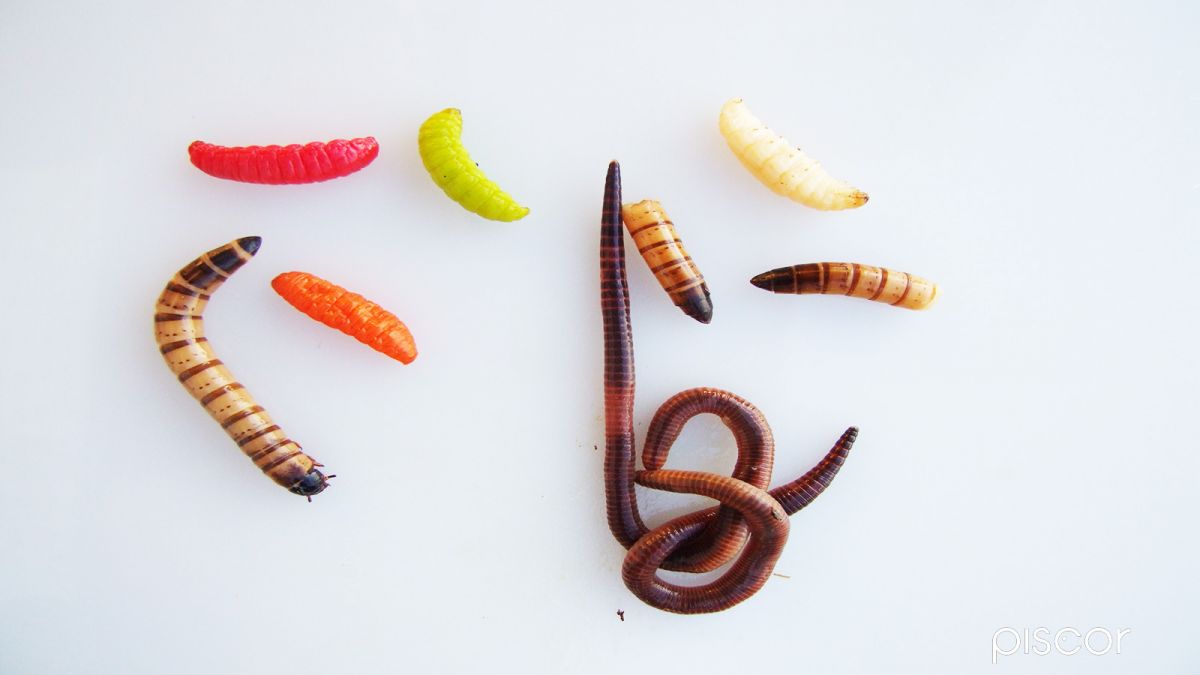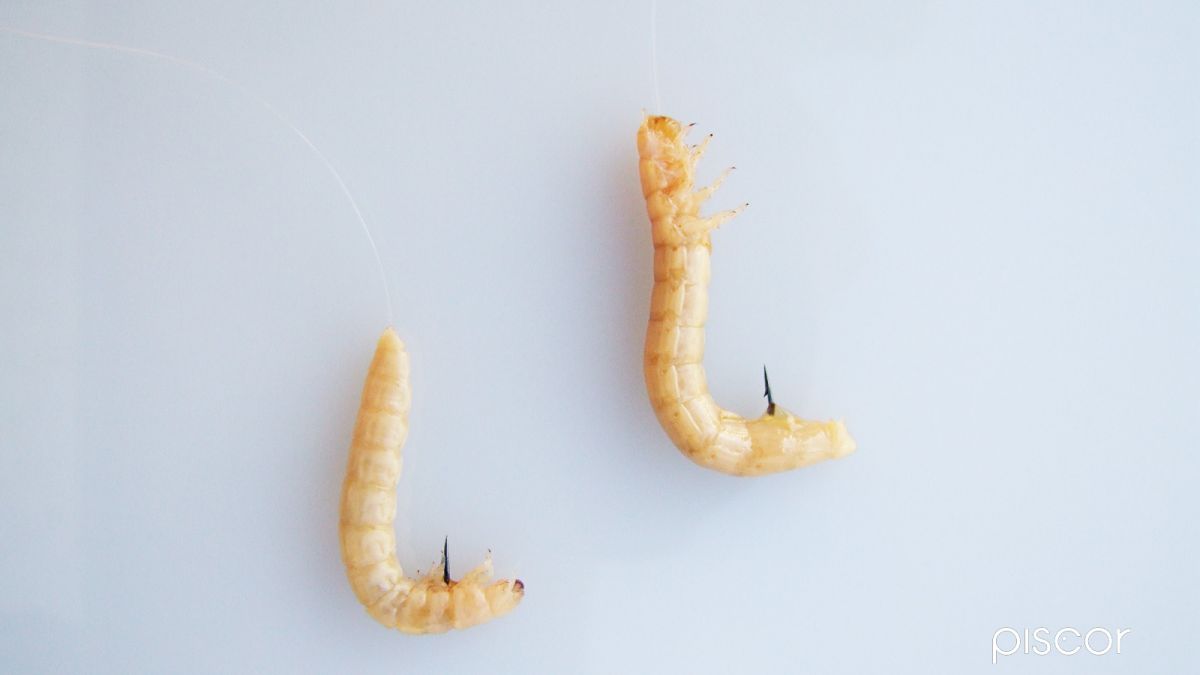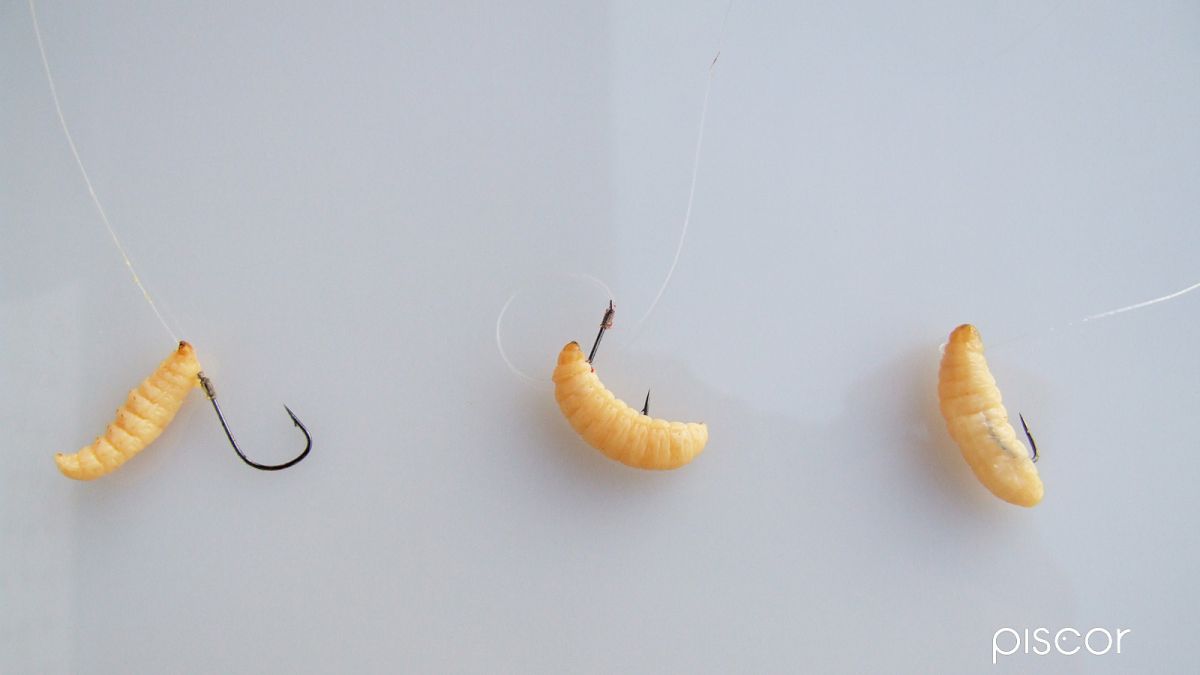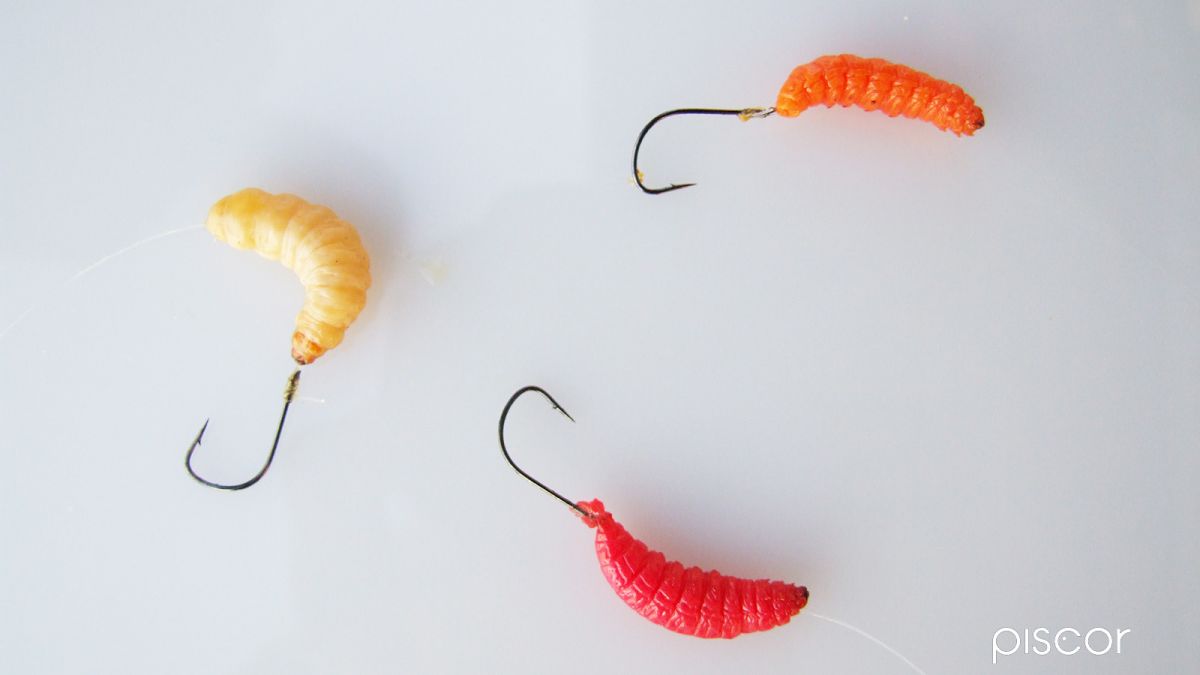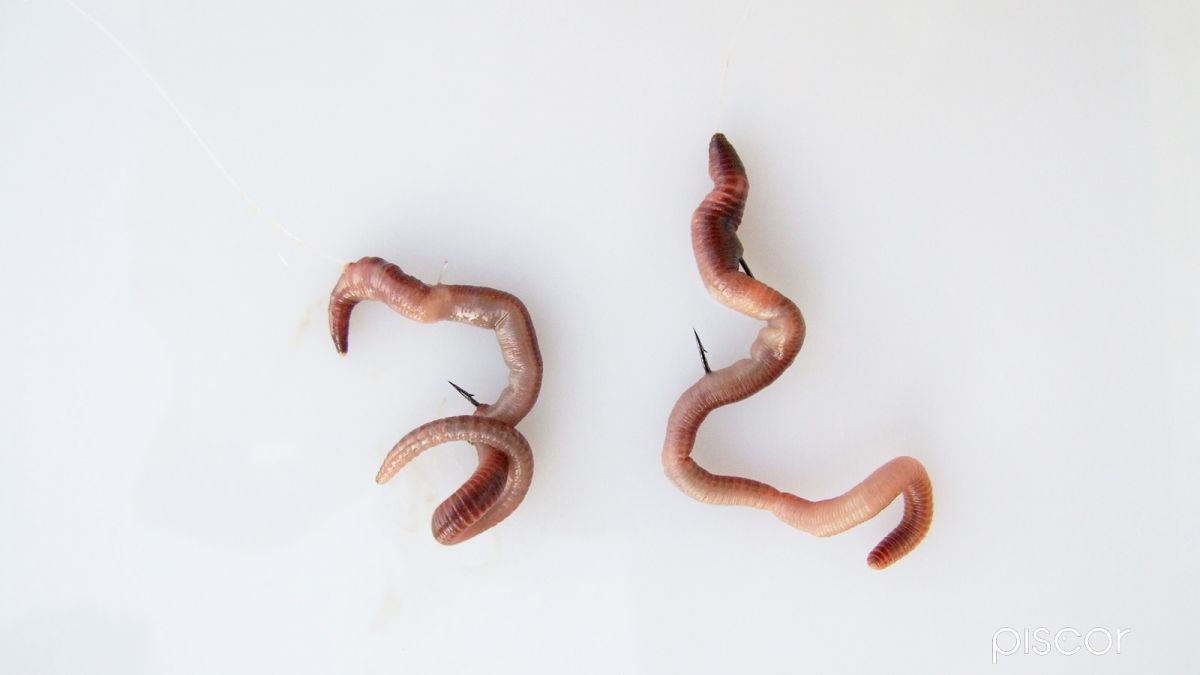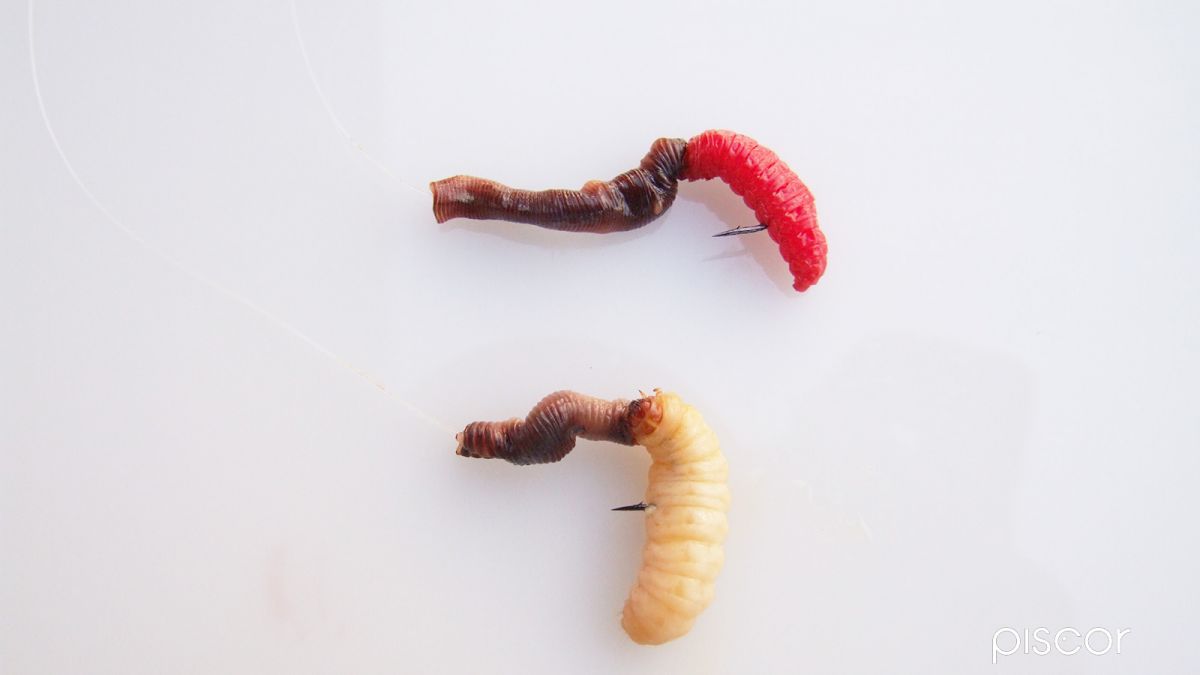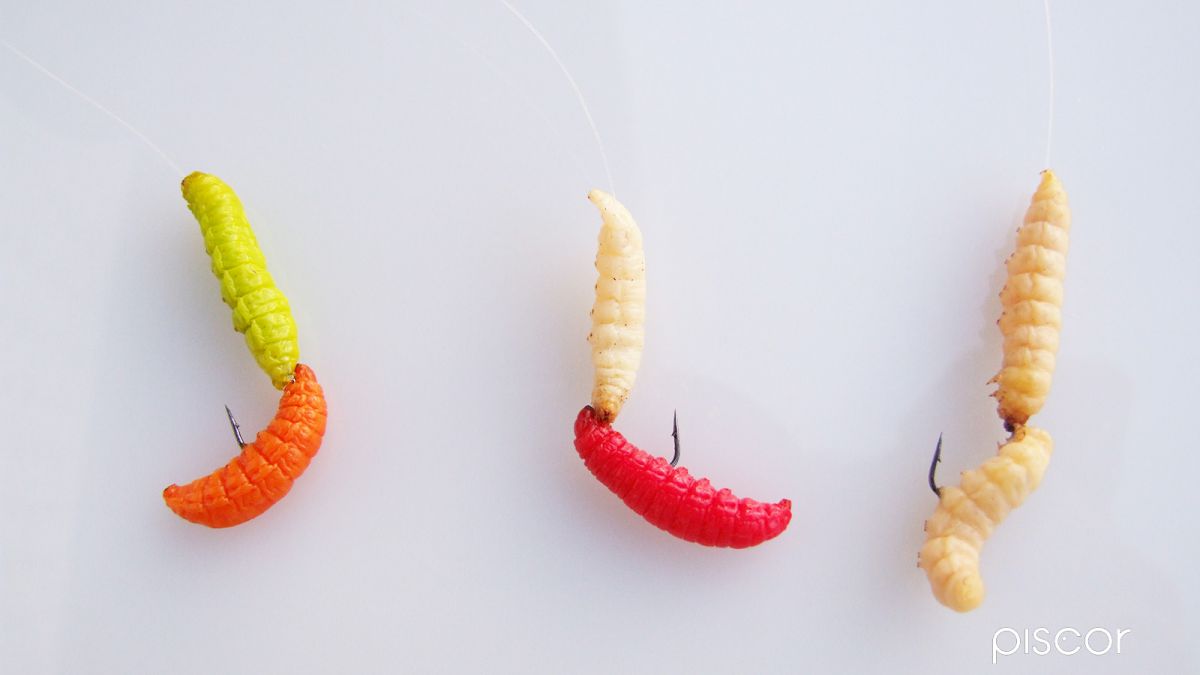In lake trout fishing bait presentation is extremely important to get a successful and appropriate action.
The bait has to spin as a propeller even during the sinking, with still reel and during the recovery action, especially in autumn when trout are very active. The first rule in lake trout fishing is to carefully prepare the bait presentation and vary it often.
Single hookbait presentations
The single hookbait presentations are usually used during the search action, or when trout are selective and particularly lethargic.
The most common single hookbait is the one with kingworms on thin hooks of a size between 4 and 6. The greater wax moth larvae on a 8/10 sized nickel hook and the earthworm on a 4/8 sized bronze hook.
Thin hooks are necessary with this presentation because they make the bait more natural and attractive for trout.
Double hookbait presentations
Those presentations are usually used at the beginning of the competition or when the trout are very active and ready to attack the bait. The double hookbait can be very successful even during the search phase, especially with baits with different colors that make the fish curious. They cannot see the colors but can distinguish the different shades of black and white. You can use any baits permitted by the rules of procedure.
Among the most common double presentations there is a piece of kingworm coupled with a wax-worm, white or colored.
One of the best double presentations, when trout are very active, is the double wax-worm on a 6 sized hook or a piece of kingworm with white wax-worm.
The White Kingworm
It is the larvae of the Zophobas morio, it belongs to the beatles family and comes from Central America. It is one of the most effective baits, used both alive or dead, conserved in containers filled with water or formalin.
Larvae shed their skin daily and when they are ready they become white. That’s the moment when you have to choose the larvae and put them in a container filled with water or formalin at a temperature between 0 and 6 degrees.
The kingworm presentation is simple and very attractive at the same time, in fact this is a very thick and resistant larvae and, if well hooked, it will spin as a propeller, attracting the trout. The best hook size is between 4 and 6.
The worm is hooked from the tail, inserting the hook in the body of the larvae for ¾ of its length and make it come out from the top.
Single wax-worm presentation
It is very important to know how to present the single wax-worm hookbait, and if well hooked, it is an excellent and extremely attractive bait. This presentation is very useful in long distance fishing, when you have to cast from 70/90 m with 30/40g bombardas. In this case any other bait presentations will be useless.
There are 3 different ways to hook the single wax-worm: barely hooked, bounded and set along the line. You can see them all in the following images. In the first case, called the “pinched wax-worm”, the hardest part of the worm head is hooked on a nickel hook, sized from no 8 to no 10. Then the tip of the hook will get out from the body of the larvae just a couple of mm before the end of the tail. It is absolutely necessary to avoid to damage the body of the worm or to make it swivel along the hook shaft.
In the second bait presentation, called the bounded wax-worm, the operations to do are a bit more complicated, but this is the best way to make your hookbait very durable, even at great distance.
Enter the hook under the head of the wax-worm and make it get out completely leaving the worm on the line, then hook the worm again in the middle of its body and make the tip of the hook get out from the tail. Pull gently the line outwards and bound the larvae with the line forming a noose around its head.
The third bait presentation, called on the line, is the most simple presentation and the fastest one. Insert the whole hook into the larvae starting from the tail and making it get out from the middle of its head.
Then make the wax-worm slide along the line and secure it with the eye of the hook. Be careful not to ruin the hardest part of the larvae head. In fact it will prevent your worm from sliding on the hook during the recovery phase.
The single Worm
This presentation is very popular in the lake trout fishing. It is perfect for search fishing with slow bombardas and where the stock is made of species like river trout and char. You can use bronze hooks sized from no 4 to no 8. Hook the larvae from its head making the whole shaft pierce into it.
Then make the hook get out at the desired point. Don’t forget, the presentation has to have a L shape in order to get a perfect spin. Don’t leave the bait project too much out of the hook for two reasons: first because the propeller effect will be reduced and then because the smart fishes could bite it without being catched.
This is a double bait presentation, with a black king worm and a white or colored wax-worm. It is commonly used in the first moments of the competitions because, when bitten, the hard black worm will raise along the line without being damaged from the fishes. So the angler will only need to change the wax-worm and not the black one.
Let’s take a black worm, cut it at the same length of the hook shaft. Empty the worm squeezing it with two fingers and hook it with a bronze hook no 4 or 6. Then add a wax-worm under the kingworm forming a L shape. Some anglers prefer to use a piece of worm instead of the black kingworm, because it is too hard for the fish.
Worm plus wax-worm
it is similar to the the previous presentation and it has got the same purpose. The only thing which is different is the worm. It is dark, but softer than the kingworm and you can use it for longer. The hook is the same too.
Put the worm, and then add the wax-worm, white or colored. It is better to cut the worms at the moment of the presentation, not before. Sometimes you can cut the worms a week before and conserve them in the earth in order to make them more resistant and strong.
Double wax-worm presentation
The most popular presentation is the double wax-worm, with a nickel hook sized from the no 4 to no 8.
If the presentation has got a L shape you’ve done a good job.
The direction of the first wax-worm is indifferent, the other one, instead, has to be hooked from the head, which is the hardest and most resistant part of it. If the heads touch each other you have a presentation called “head to head”, on the contrary with the two larvae following the same direction you will have the presentation called “two opposite worms”.
This presentation is very popular among anglers, especially now with the advent of the colored larvae, which are even more attractive for fishes, even for the laziest ones.

